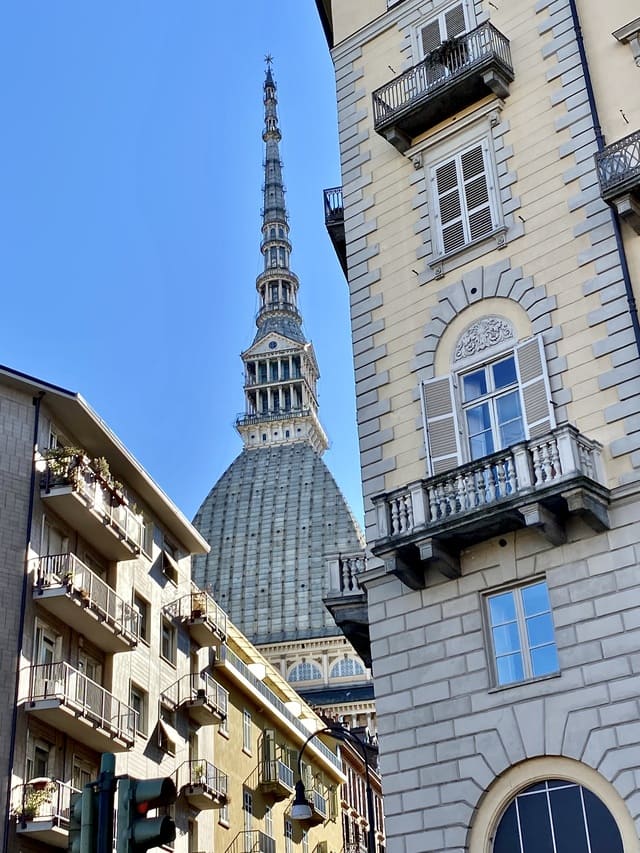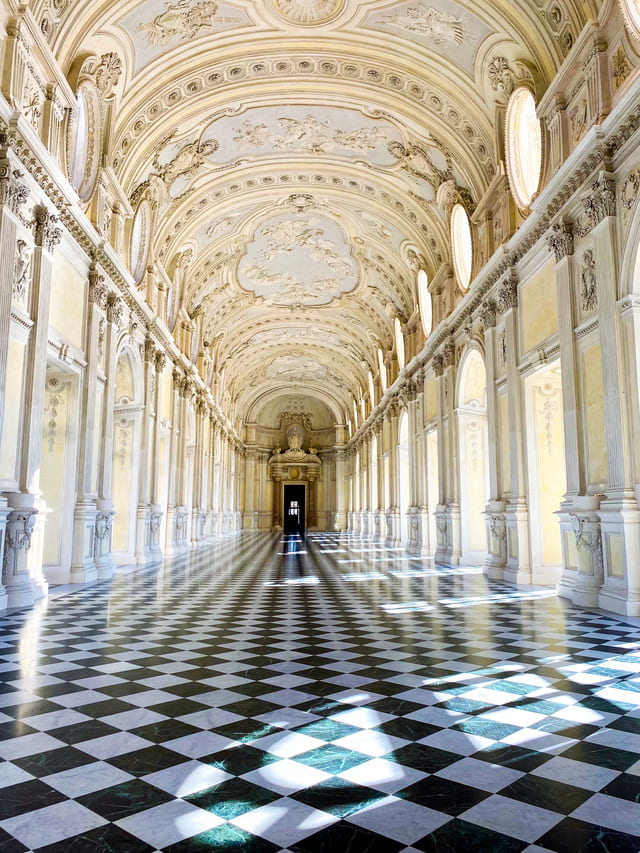Turin is the hometown of some of the greatest symbols of Made in Italy in the world, such as Vermut, Gianduja chocolate, and espresso coffee, it is the hub of the Italian automotive industry, as well as an important center of publishing, banking, and insurance, information technology, cinema, food and wine, aerospace, industrial design, sports, and fashion.
For my short weekend, I chose to stay away from the center at Cascina Fossata, a brand new co-living project where apartments and hotel rooms are available.
What not to miss in Turin
Piazza San Carlo is one of the most important squares in the historic center of Turin. Often nicknamed “the living room of the city” by the inhabitants of Turin, it is inserted in the road axis of Via Roma, which connects it to Piazza Castello and Piazza Carlo Felice.
Palazzo Carignano, together with Palazzo Reale and Palazzo Madama, is one of the most important historical buildings of the city and, like them, is part of the UNESCO serial site Residenze Sabaude. It houses the National Museum of the Italian Risorgimento, reopened after lengthy restoration and refurbishment work.

Palazzo Reale di Torino is the first and most important of the Savoy residences in Piedmont. Since 2016 it has been part of the Musei Reali together with the Galleria Sabauda, Armeria Reale, Biblioteca Reale, Palazzo Chiablese, and the Museum of Antiquities.
The Egyptian Museum of Turin is the oldest museum in the world entirely dedicated to the Nilotic civilization and is considered, for value and quantity of exhibits, the most important in the world after Cairo.
The Mole Antonelliana is a monumental building of Turin, located in the historical center, a symbol of the city and one of the symbols of Italy. The name derives from the fact that, in the past, it was the tallest masonry building in the world, while its adjective comes from the architect who conceived it, Alessandro Antonelli. Since 2000, the National Museum of Cinema has been located inside the building.

The basilica of Superga rises on the homonymous hill. It was built by King Vittorio Amedeo II as a thanksgiving to the Virgin Mary, after having defeated the French. For this reason, it is considered a “celebratory monument”. The project is by the architect from Messina, abbot Filippo Juvarra, and dates back to 1715.

The church of the Gran Madre di Dio is one of the most important Catholic places of worship in Turin. Located in the square of the same name, it is on the right bank of the Po, in the Borgo Po district. The project was the work of the architect of the Savoy court Ferdinando Bonsignore, who gave the church shapes and proportions clearly inspired by those of the Pantheon in Rome, in neoclassical-Arian style.
And here we finally come to the real reason why I chose to spend a weekend in Turin: the Royal Palace of Venaria Reale, one of the Savoy residences that is part of the UNESCO serial site inscribed on the World Heritage List since 1997. The palace of Venaria was designed by the architect Amedeo di Castellamonte. It was commissioned by Duke Carlo Emanuele II, who intended to make it the base for hunting parties in the hilly moors of Turin. The village was joined by many houses and palaces of workers and ordinary citizens who wanted to live in the surroundings of the palace until Venaria Reale became an autonomous municipality of the province of Turin. Book your tickets online – there are many discounts and reductions and get ready for an unforgettable visit!


Where to eat in Turin
As you know for me, it’s not a good weekend or vacation if you don’t eat well! So here are the places I’ve tried that are worth trying!
Farmacia del Cambio, a historic place in Piazza Carignano, is a boutique/laboratory where you can taste and buy delicate pastries and products revisited by Matteo Baronetto. With a magnificent view that you can enjoy on the outdoor tables in the warm spring sun.

Stratta is a historical place in Italy, since it was founded in 1836, and is one of the oldest pastry shops in the city of Turin. Stratta was founded as confectionery and official supplier to the Royal House and Camillo Benso Conte di Cavour.

Mare Nostrum Restaurant offers a fish cuisine that takes its cue from the true seafood traditions. The recipes are simple and light, based on the search for quality ingredients, the use of olive oil, and the freshness of the products used, starting from the fish which is naturally fresh, to the aromatic herbs.

Enoteca Parlapà offers delicious traditional dishes of Piedmontese cuisine, with very high care in the selection of raw materials and a wide selection of wines!
Finally, in the municipality of the Royal Palace of Venaria, Passami il Sale. A very well-cared osteria that prepares typical Piedmontese dishes and presents a wide range of wines. Do not miss the risotto and agnolotti!
1 comment
[…] […]